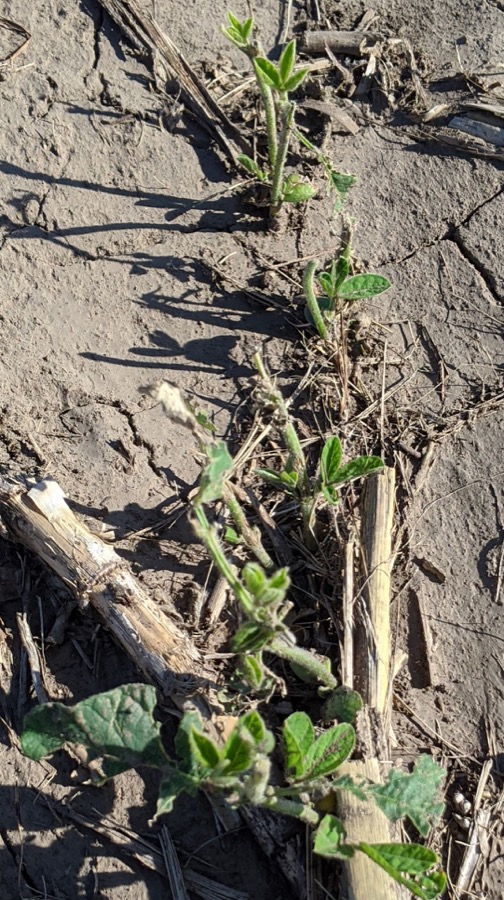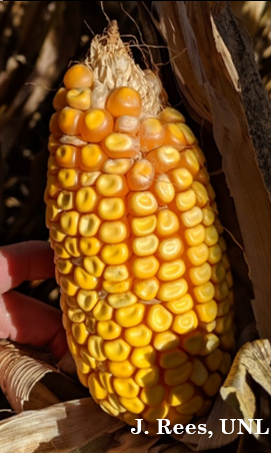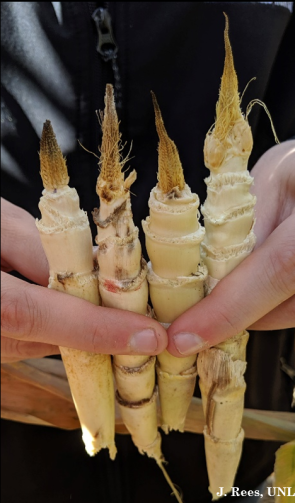| JUNE-AUGUST UPCOMING EVENTS: June 15: CSI for Youth with Jenny in the field, 5 p.m., RSVP to Jenny jrees2@unl.edu or (402) 440-4739 June 18: Force Majeure: How Extraordinary Events Can Impact Ag Contracts Webinar, Noon CST, Register: go.unl.edu/manage2020 June 20: Maximizing Efficiencies: The Economic Return of Spring Vaccinations and Strategic De-worming (NE Cattlemen in partnership with Boehringer Ingelheim), 7 p.m. CST Register Here June 24: Weed Management Field Day-VIRTUAL July 8: Palmer Amaranth Mgmt Field Day-VIRTUAL Aug. 11: Soybean Management Field Days, Hildreth Aug. 12: Soybean Management Field Days, Elgin Aug. 13: Soybean Management Field Days, Shelby Aug. 14: Soybean Management Field Days, Arlington Aug. 20: Midwest Soil Health Clinic, ENREC Aug. 25: SCAL Field Day, Clay Center Aug. 26: Midwest Soybean Production Clinic, ENREC Aug. 27: Midwest Corn Production Clinic, ENREC June 3: Communicating with Farmers Under Stress webinar, 9 a.m., go.unl.edu/farmstress June 24: Weed Management Field Day, SCAL near Clay Center July 8: Palmer Amaranth Mgmt Field Day, near Carleton Aug. 11: Soybean Management Field Days, Hildreth Aug. 12: Soybean Management Field Days, Elgin Aug. 13: Soybean Management Field Days, Shelby Aug. 14: Soybean Management Field Days, Arlington Aug. 20: Midwest Soil Health Clinic, ENREC Aug. 25: SCAL Field Day, Clay Center Aug. 26: Midwest Soybean Production Clinic, ENREC Aug. 27: Midwest Corn Production Clinic, ENREC |
Storm damage resources: Have had a number of calls throughout the State this week

from those who have experienced hail, flooding, and/or wind damage. The warmer temperatures were helpful for regenerating plant growth after hail; however, they’re not helpful for those who had heavy rains and flooding that didn’t recede. I shared this last week too but here’s a Hail Damage Assessment resource with many videos: https://cropwatch.unl.edu/hail-know/assess-my-damage. For flooding, corn plants prior to V6 can survive under water for 2-4 days if temperatures do not exceed 77°F. From V7-V10, plants can survive 7-10 days if temperatures do not exceed 86°F. For soybeans, yield losses are minimal if flooding lasts less than 48 hours. If flooded for 4-5 days, fewer nodes develop and plants will be shorter. If flooded for 6+ days, possible stand and yield loss. The longer it takes a field to dry out, the more yield loss that may occur. For soybeans at flowering, there’s potential for yield loss, especially on poorly drained soils.
As we deal with corn leaf loss due to natural sloughing off, early frost, and recent hail
and wind damage, it can make corn development staging tricky for post- pesticide applications. The reason I keep emphasizing development stages is because I’ve been called out to many ear formation concerns the past several years. No one intends for these things to happen! These are opportunities for all of us to learn. In all cases, mis-diagnosis of development stage occurred prior to the pesticide application (whether herbicide, insecticide and/or fungicide). The use of non-ionic surfactant (NIS) in the tank from V10-VT resulted in the ear formation issues in addition to increased surfactant load from multiple products in the tank mix. My hope in emphasizing corn development staging this year is to hopefully reduce the incidence of ear abnormalities that occur from post- pesticide applications. I put together the following video to hopefully help: https://twitter.com/jenreesources/status/1272370173853470720?s=20.
Gardening 101 resources: A team within Extension pulled together all the vegetable gardening resources to create a one-stop place for vegetable gardening. This resource, housed on the backyard farmer website, is a place for beginning gardeners and experienced ones. Check it out at https://go.unl.edu/veggies101!
Sunscald/scorch on green beans: This past week I received a few pictures of green beans that had large brown ‘burnt looking’ areas. This is caused by sunscald. The sun and wind has been intense. Seek to evenly water and avoid watering the foliage.
Trees: Lots of tree questions past few weeks. If leaves are pre-maturely turning yellow and dropping, it’s most likely due to fungal disease. This is mostly happening since the 3” rain over Memorial Day. All the trees I’ve looked at are already starting to develop new leaves. Weed whackers cause more injury to trees that one realizes, so be very careful using them around trees, or put mulch around them to reduce weeds. Remove ‘mulch volcanoes’ around trees as the mulch against the trunk can cause rot. Mulch should not be piled against the trunk. Seek to make clean and proper pruning cuts for all the storm damage that has occurred to trees. For those who’ve experienced bark removal from lightning strikes or winter cracking, don’t paint anything over the wound and don’t fertilize or do anything to the tree. Allow the tree to seek to heal on its own. It’s amazing what trees can overcome! Winter and spring dessication injury may be causing evergreens (cedars, junipers, yews, and arborvitae) to suddenly turning brown. Kelly Feehan, Extension Educator shares, “During warmer than average temperatures in February and March, moisture was lost from green needles and could not be replaced from frozen or cold soils. This was followed by a dry spring; and then above average temperatures and extreme winds. These conditions increase the rate of transpiration and increased moisture loss from needles. If the moisture is not replaced quickly, tissues dessicate and eventually die. Evergreens growing in open exposed sites, near pavement or light colored houses, and those planted in the last three to five years are most susceptible. Other than using organic mulch and keeping soil moist, there is not much to do. Once an evergreen or a branch turns completely brown, it will not recover.” You can prune out dead branches/areas and see how the plants overall recover.




































